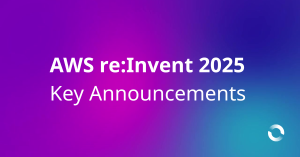Data breaches are escalating across Australia, and unsecured PII in cloud systems remains one of the biggest culprits. In this guide, I will Walk you through why PII redaction in the cloud has become a strategic priority, not just a compliance checkbox.
Table of Contents
As someone who has spent years helping organisations navigate the complex world of data privacy and quality, I have witnessed firsthand the devastating impact of data breaches on businesses of all sizes. What keeps me up at night is not just the technical challenges, it seeing talented teams scramble to explain to customers, regulators, and stakeholders how sensitive personal information ended up in the wrong hands.
The truth is that most data breaches are not caused by sophisticated hackers breaking through fortress-like security systems. They happen because organisations accumulate vast amounts of Personally Identifiable Information (PII) across their systems without implementing proper detection and redaction processes. It is like leaving your house keys in every room, eventually, someone is going to find them.
That is why I am passionate about PII redaction in the cloud. It is not just another compliance checkbox; it is your insurance policy against the inevitable. In this comprehensive guide, I will share the strategies, tools, and real-world implementations I have used to help organisations protect their most sensitive data using AWS-native services.
Why does PII detection and redaction in the cloud matter?
The current state of data breaches in Australia
July 2025 Update: Qantas has just suffered a significant cyber-attack with substantial customer data stolen, adding to Australia’s already record-breaking year for data breaches. The Office of the Australian Information Commissioner reported 1,113 data breaches in 2024, a 25% increase from the previous year.
Now, with major incidents like Qantas continuing into 2025, the trend shows no signs of slowing, with 69% of all breaches caused by malicious attacks. These are not just statistics to me, they represent real people whose personal information is now at risk.
What makes organisations remain vulnerable?
The Qantas breach underscores something I have been telling clients for years: even well-established organisations with significant security investments remain targets. Why? Because they are focusing on the wrong problem.
The most compromised data across these incidents? Contact information, identity details, financial records, health information, and tax file numbers. These are exactly the types of PII stored in cloud environments, that organisations routinely store in analytics systems, backup databases, and operational logs without proper redaction.

The fundamental shift in thinking
Here is what I have learned from working with hundreds of organisations: it is not just about preventing breaches but minimising the blast radius when they occur. This mindset shift is crucial.
As businesses scale digitally, they accumulate vast amounts of PII scattered across databases, logs, and analytics systems. Australia’s ongoing breach epidemic illustrates this critical reality perfectly.
PII redaction in the cloud is not just best practice, it is a crucial safeguard.
From compliance to business imperative
With tightening regulations like GDPR and rising consumer privacy expectations, PII redaction has evolved from a compliance checkbox to a business imperative. I have seen organisations that fail to protect personal data face not just regulatory fines, but reputational damage and lost customer trust that takes years to rebuild.
What is the real cost of PII exposure?
Recent high-impact Australian breaches
Note: Each of these cases demonstrates a common pattern: data was available, but cloud-native PII redaction processes were not in place.

Industry-specific risks
Healthcare: Patient records used in healthcare analytics platforms and hospital data lakes
- Risk: Violations of the Privacy Act 1988 and APP 6 (use and disclosure of personal information); potential breaches of patient confidentiality
- Impact: The average healthcare data breach in Australia costs over AUD $5 million, with high regulatory, reputational, and litigation exposure (source: OAIC & IBM reports)
Financial Services: Customer data in ML training sets
- Risk: Breaches of APPs 1, 6, and 11 (governing security, use, and management of personal information); APRA CPS 234 non-compliance risks
- Impact: Financial services data breaches result in 2–3x higher remediation costs, increased APRA oversight, and loss of investor confidence
Retail/E-commerce: Customer profiles in vendor-shared datasets
- Risk: Non-compliance with APP 8 (cross-border disclosure) and APP 5 (notification of collection); loss of customer trust
- Impact: Breaches can lead to up to 10% customer churn, negative brand sentiment, and OAIC investigation outcomes
These sectors face unique privacy risks, all of which demand scalable PII redaction in the cloud.
Understanding PII
Personally Identifiable Information (PII) encompasses any data that can identify an individual, either alone or combined with other information:
Direct Identifiers:
- Full names, email addresses, phone numbers
- Government IDs (SSN, TFN, Medicare numbers)
- Credit card numbers, account numbers
Indirect Identifiers:
- IP addresses, device IDs, geolocation data
- Behavioural patterns, purchase history
- Biometric data, photos with faces
The challenges:
- PII exists in both structured databases and unstructured formats (PDFs, logs, JSON) and rising costs of using proprietary software, making detection and redaction complex and expensive at enterprise scale.
The business case for Cloud PII Redaction
When I sit down with executives to discuss PII redaction, I always start with three fundamental truths that I have learned from years of implementation experience:
1. Regulatory compliance is non-negotiable (and getting stricter)
Regulation | Region | Key Requirements | Penalties |
EU/Global | Data minimisation, right to erasure | Up to 4% of annual revenue | |
California | Consumers opt-out rights, deletion | Up to $7,500 per violation | |
Australia | APPs compliance, breach notification | Up to $50M for serious breaches | |
US Healthcare | PHI protection, access controls | Up to $1.5M per incident |
2. Your best defence for breach impact reduction
Here is something I learned the hard way: you cannot prevent every breach, but you can control the damage. Redacted data significantly limits the impact during security incidents. I have seen organisations where attackers gained access to millions of records, but because the data was properly redacted, the actual damage was minimal.
Even if your systems are compromised, sanitised datasets provide minimal value to attackers. It is like having a safe that only contains photocopies instead of the real documents.
3. What is the hidden value to businesses?
This is where I get excited about PII redaction, it is not just about protection, it is about enablement. Proper redaction unlocks:
- Analytics without risk — Your data science teams can work with clean datasets without legal breathing down their necks
- Secure data sharing — Finally collaborate with partners without lengthy legal reviews
- ML model training — Build better models by avoiding overfitting on personal patterns (trust me, your models will perform better)
How do I choose the right privacy protection technique?
After implementing dozens of PII protection systems, I have developed a simple framework for choosing the right technique. Here is how I guide my clients through this decision:
Technique | Method | Use Case | Reversible |
Redaction | Replace with [REDACTED] or nulls | Compliance, public datasets | No |
Masking | Partial hiding (m***@cevo.com.au) | UI displays, support tools | No |
Tokenisation | Consistent meaningless tokens | Reversible anonymisation | Yes |
Encryption | Cryptographic scrambling | Data at rest/transit | Yes |
Strategic redaction in data pipelines
One of the most common mistakes I see organisations make is trying to redact data after it is already spread throughout their systems. Here is my golden rule: redact early, redact often.
The optimal redaction point: During ingestion or transformation before data reaches your lake or warehouse. I call this the “gateway approach”, clean your data at the front door, not after it has made itself at home.

AWS tools for PII redaction in the cloud
After working with the full AWS ecosystem, here are the services I consistently recommend to clients based on their specific use cases:
Service | Primary Role | Best For |
AWS Glue Studio | No-code ETL pipelines | Batch redaction workflows |
Amazon Comprehend | ML-based PII detection | Intelligent content analysis |
AWS Lambda | Real-time processing | Event-driven redaction |
Amazon Macie | PII discovery | S3 data classification |
Kinesis Data Firehose | Stream delivery | Real-time data transformation |
AWS DataBrew | Visual data preparation | Interactive redaction rules |
Real use cases for PII redaction
PII redaction is not a one-size-fits-all solution, something I learned after my first few implementations did not go as planned! Different business scenarios require different approaches based on data sensitivity, usage patterns, and compliance requirements.
Here are the five most critical use cases where I have seen redaction deliver immediate value for my clients:
- ETL Pipelines — Sanitise data before warehouse loading
- Real-Time Streams — Clean sensitive fields in live data flows
- ML Preprocessing — Train models on privacy-safe datasets
- Data Sharing — Generate compliant datasets for partners
- Compliance Audits — Produce scrubbed data for regulatory review
Redaction vs. Masking in practice
Use redaction for:
- ETL to Analytics: Complete removal for data warehouse – SELECT customer_id, ‘[REDACTED]’ as email, purchase_amount FROM orders
- ML Training: Clean datasets without PII exposure – {“feedback”: “[REDACTED] loves this product”, “sentiment”: “positive”}
- Partner Sharing: External data exchange – Replace all PII with [REDACTED] tokens
Use Masking for:
- Support Dashboards: Context preservation – m***@gmail.com helps agents identify customers
- Real-time Monitoring: Pattern recognition – +61 4** *** 789 maintains format for validation
- Debug Logs: Troubleshooting assistance – User m***@cevo.com.au failed login provides enough context

Questions to ask before implementation
Before I start any PII redaction implementation, I walk through these critical questions with my customers. Getting these answers upfront saves weeks of rework later:
Where is your data?
- What format is your data in?
- How does your data flow through your system?
How Sensitive is your data?
- What level of protection do you need?
- What regulations apply to your business?
- What business value must your preserve?
How much should be the automation level?
- What is your detection approach?
- How hands-on do you want to be?
What’s next? Implementation roadmap
Over the next few articles, I will share the exact implementations I use with clients, complete with code samples, configuration files, and lessons learned from real deployments such as No-Code Solutions using Glue Studio and Data Brew. ML Powered Detections using Comprehend and Detect PII (Glue Studio’s transformation), discovery and governance covering Amazon Macie and auto workflow orchestration and monitoring Pipeline and performance optimisations.

Final takeaways
After years of helping organisations implement PII redaction, here is what I want you to take away from this guide:
PII redaction is now a strategic business capability, not just a compliance requirement. The organisations that get this right do not just avoid regulatory fines; they unlock new business opportunities and build customer trust that becomes a competitive advantage.
AWS provides the tools to implement scalable, automated redaction without building complex infrastructure from scratch. I have seen teams go from zero to production-ready PII redaction in weeks, not months.
My advice: Privacy should be your default approach, not an afterthought. Start with redaction early in your data pipeline, and your future self (and compliance team) will thank you.
Ready to start your PII redaction journey? In my next blog, I will walk you through a hands-on tutorial for CSV redaction using AWS Glue Studio’s no-code interface, complete with sample data and step-by-step instructions based on real client implementations.
Need help? Let us create a privacy-first strategy for your organisation. Connect with our team for a personalised PII redaction strategy session.

Mehul is a seasoned Senior AWS Data Consultant with over 18 years of experience spanning the banking, fintech, energy, and retail sectors. He specialises in data quality, security, and governance, and is known for his deep expertise in building robust, scalable data solutions. Outside of work, Mehul is an avid music enthusiast and passionate traveller. He has a strong drive for continuous learning and stays ahead of the curve by exploring emerging tools and technologies




